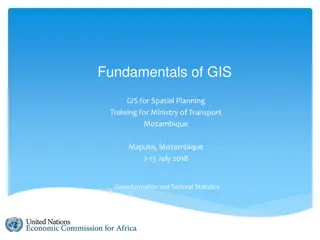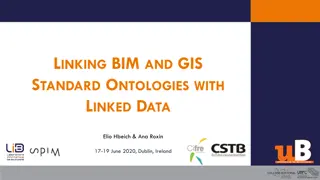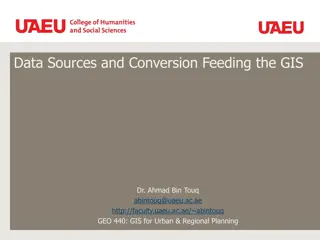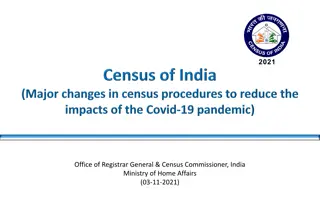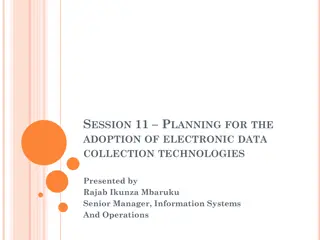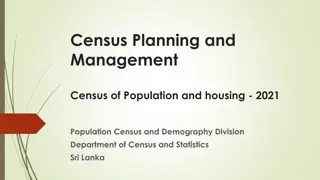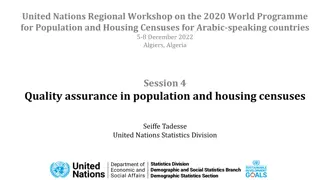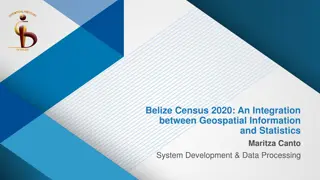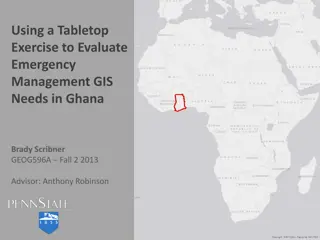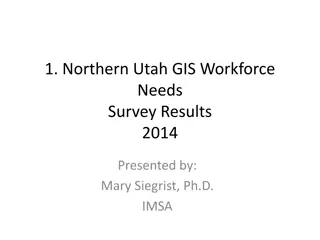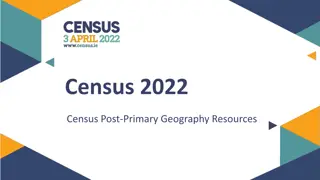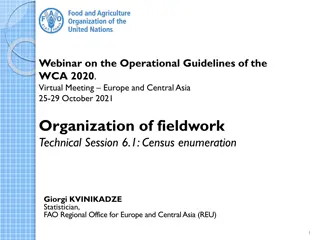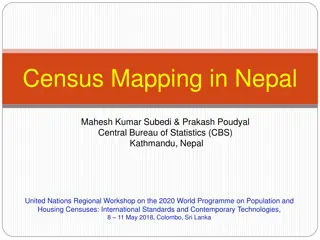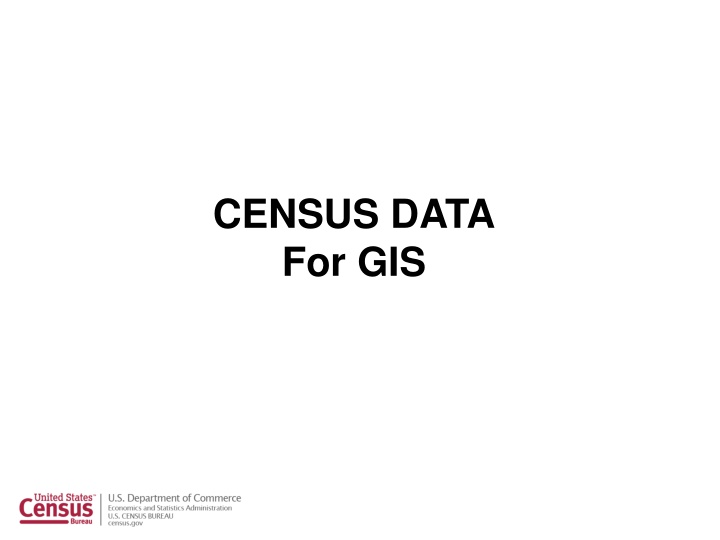
Overview of Census Data for GIS
The Census Data for GIS includes various types such as the Decennial Census, American Community Survey (ACS), Population Estimates, Economic Census, and Annual Economic Surveys. These data sources provide valuable demographic, economic, and population information for different geographical areas. The Decennial Census, conducted every ten years, offers detailed demographic data for apportionment purposes. The ACS, an annual survey, replaces the long form census and collects essential data on income, commute times, and more. The Population Estimates Program provides population numbers between censuses. The Economic Census offers a detailed picture of the national economy every five years, and the Annual Economic Surveys cover multiple sectors. Additionally, the American Community Survey gives communities an annual snapshot of changes. Explore these data sources to gain insights for geographical information systems (GIS) applications.
Download Presentation

Please find below an Image/Link to download the presentation.
The content on the website is provided AS IS for your information and personal use only. It may not be sold, licensed, or shared on other websites without obtaining consent from the author. If you encounter any issues during the download, it is possible that the publisher has removed the file from their server.
You are allowed to download the files provided on this website for personal or commercial use, subject to the condition that they are used lawfully. All files are the property of their respective owners.
The content on the website is provided AS IS for your information and personal use only. It may not be sold, licensed, or shared on other websites without obtaining consent from the author.
E N D
Presentation Transcript
CENSUS DATA For GIS
Census Data General Types: Decennial Census (1990, 2000, 2010) American Community Survey (ACS) Population Estimates Economic Census Annual Economic Surveys
Decennial Census The official U.S. Census is described in Article I, Section 2 of the Constitution of the United States. It calls for an actual enumeration of the people every ten years, to be used for apportionment of seats in the House of Representatives among the states. Contains the most detailed demographic information available but is outdated a few years after the Census* * This was the impetus for the American Community Survey
Population Estimates Program The Census Bureau's Population Estimates Program publishes population numbers between censuses. Estimates from the Population Estimates Program are for the past, while Projections provide population estimates for future dates.
Economic Census The Economic Census provides a detailed portrait of the Nation's economy once every five years, from the national to the local level. The Economic Census is conducted every five years, in years ending in '2' and '7.
Annual Economic Surveys In addition to conducting the Economic Censuses every five years, the U.S. Census Bureau conducts more than 100 economic surveys covering various sectors of the economy. For more information, see; https://factfinder.census.gov/faces/nav/jsf/pa ges/programs.xhtml?program=aes
American Community Survey The American Community Survey (ACS) is a nationwide survey designed to provide communities an annual look at how they are changing. It replaced the long form in the 2010 census. The ACS collects information from U.S. households similar to what was collected on the Census 2000 long form, such as income, commute time to work, home value, veteran status, and other important data.
Decennnial Data Products Basically there are two* types of data: PL 94-171 redistricting data 100% Data (SF1 & 2) * Public Use Microdata Samples
Economic Surveys? In addition to conducting the Economic Censuses every five years, the U.S. Census Bureau conducts more than 100 economic surveys covering annual, quarterly, and monthly time periods for various sectors of the economy. These surveys measure a wide variety of economic activities, from capital expenditures for food manufacturing companies to annual auto dealership sales.
What is the American Community Survey? A large, continuous demographic survey that: Produces annual and multi-year estimates of the characteristics of the population and housing Produces characteristics,nota population count Produces information for small areas including census tracts
What is the American Community Survey? Collect Detailed Decennial Census Sample Data Every Month Instead of Only Once Each Decade Release Tabulations of These Data on a Yearly Basis Allow the Census Bureau to Restructure and Simplify the Decennial Census Effort
Full Implementation: Every County Nationwide 3 million addresses every year throughout the U.S. and in Puerto Rico Provide single-year period estimates for communities of 65,000 or more starting in 2006 Provide 3-year period estimates for communities with populations of 20,000 or more starting in 2008 Provide 5-year period estimates starting in 2010
Factors to Consider Content (topics) Level of Detail (how small) Currency of the data Collection cycle (how often) Collection date (when last collected) Coverage (Geography)
Level of Detail Decennial ..Census Block to U.S. ACS ... .Tract to U.S.* Pop Estimates .Metro area to U.S. Economic Census. ZIP Code to U.S. (5yr) Surveys County to U.S. * Block group level data are available via FTP but are not recommended unless aggregated
Data Currency ACS data are the freshest characteristics Decennial data remain the official counts Economic census and surveys provide critical measures of economic activity at the ZipCode/County level and higher. Economic Census is years ending in 2 & 7 Surveys are usually monthly/semiannual
Acquiring Census Data Primary sources of the data www.census.gov (American Fact Finder) NHGIS: www.nhgis.org (Historical U.S. census data and boundary files from 1790 to 2010.)
Accessing Census Data American FactFinder: http://factfinder.census.gov/
Thank you! Jim Castagneri James.d.castagneri@census.gov



